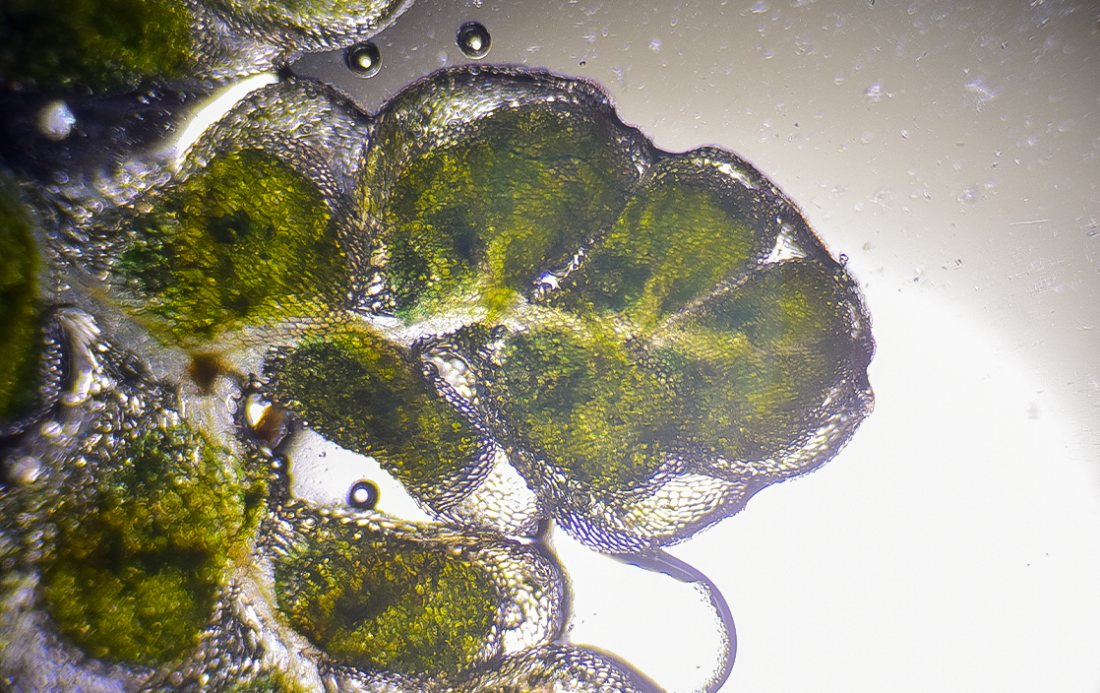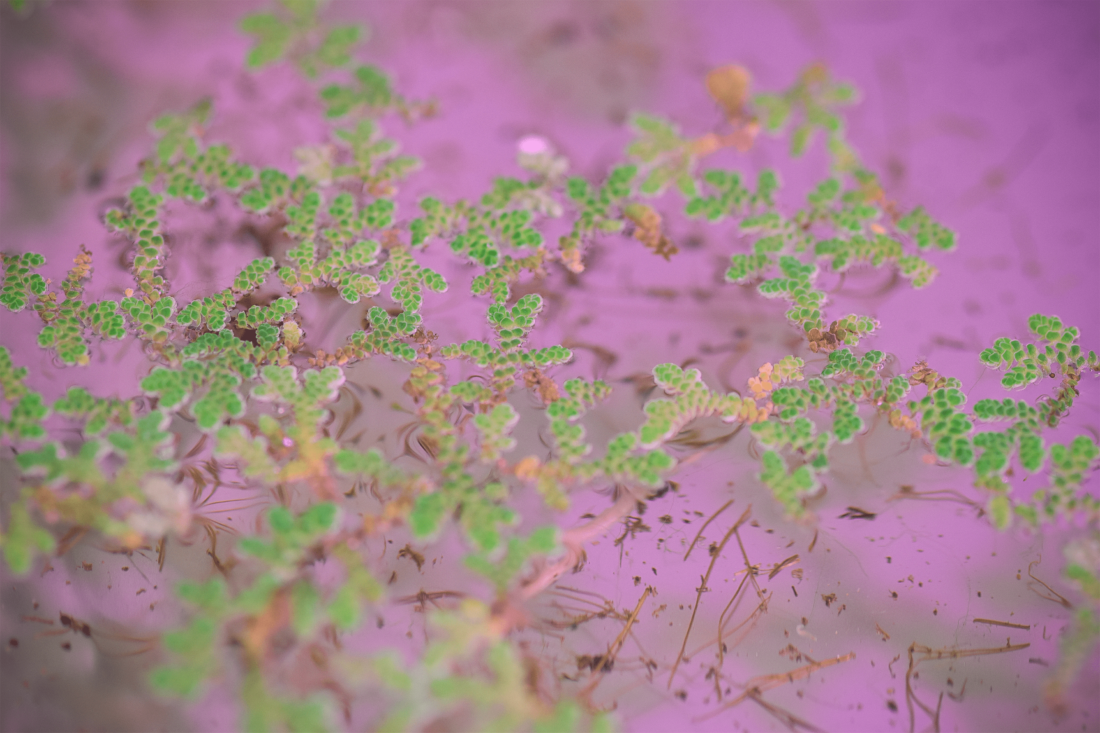What is ‘Azolla duckweed?’- Explorative pilot
The Azolla Project
An ever-growing world population with an increased demand for food. The desire to eat and live a healthier life. The challenge of climate transition. These are societal issues that the Azolla Project of BioArt Laboratories wants to challenge. In the following two years we explore the possibilities of the plant Azolla through the bio arts, design, nature and science with parties such as Brainport Industries Campus (B.I.C.) and Dona Stedenbouw. Read what this fern can mean for society when we synthesize strengths.
What is the plant Azolla?
Azolla is a genus of species of small aquatic ferns that float on the surface of the water and are part of the family Salviniaceae. Sometimes mistaken as duckweed, this fast-growing plant is capable of exponential growth in a short period of time and can thrive everywhere in the world with temperate, subtropical and tropical freshwater systems. What sets this plant apart from other similar plants, is the combination of high-protein values, extreme growth rate and its symbiotic relationship with the cyanobacteria Anabaena azollae. This micro-organism is capable of fixating atmospheric nitrogen into essential nutrients for the fern. It is a common practice to utilize this symbiotic relationship in agriculture. For example, the Azolla pinata species is used as green manure in wet rice cultivation in East Asia. It is even hypothesized that this plant played a major role in the draw-down of carbon dioxide in the middle Eocene epoch, also called the Azolla event. The high-protein values are also utilized well for livestock, where Azolla is commonly used as a feed supplement in animal food. The plant has been the subject of various researches even going to the extent of being part of space research.
Some species of Azolla, such as Azolla filiculoides, are seen as invasive exotic species with the potential to severely affect aquatic systems if its growth is left unchecked. However, existing research indicates that Azolla only attains dominance in very nutrient-rich water, and mostly in cases where the poor surface water quality is part of the major problem. But what if you could use this fern responsibly? What if you use the strength of this plant in design and landscape practice combined with modern technology to solve societal issues?
The Azolla project
BioArt Laboratories wants to pioneer the next step of Azolla into attainable integration with modern society in a sustainable, natural environment. To achieve more with minimal means and minimum impact on nature. Together with B.I.C. and Dona Stedenbouw, we will not only explore the potential contribution of Azolla to reduce emissions from Eindhoven Airport and the surrounding highway traffic, but also venture in the culinary world by harvesting it as green ‘lettuce’ and as meat substitute for consumption. These culinary results may surprise you!
The project aims to utilize the water retention areas near the campus for controlled Azolla growth. These retention areas normally collect excess water temporarily, with no time to develop an aquatic ecosystem. By combining this landscape with controlled Azolla fields, we aim to add extra functionality to the high-tech landscape of the B.I.C. and show how a green, thriving landscape can contribute to innovation and the living environment. The Azolla and the cyanobacteria Anabaena azollae will be used to test the nitrogen fixation within an industrial setting, while the form will be explored and designed in such a way that it is ecological sound and fitting in a green landscape environment.
Date
May 5, 2021
Category
Experiments, Talks









